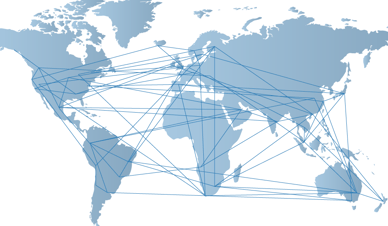On Creating the Most Responsive Supply Chain
Brian Hoey - February 01, 2018

 Imagine for a moment that you’re an employee at an automotive manufacturing company. Every year of two, the owners create and share a strategic vision for the long-term future with management. Managers, in turn, create shorter-term plans of several months to put the longer-term vision into practice with Sales and Operations Planning (S&OP). As an employee, you manage your day-to-day tasks in accordance with those plans, responding the small crises of the workday with whatever resources and insights are available to you. Perhaps in responding to these situations, you find yourself wishing that there was something to bridge the gap between S&OP and those day-to-day processes. Sales and Operations Execution (S&OE) is that bridge, and it represents the path to the most responsive possible supply chain.
Imagine for a moment that you’re an employee at an automotive manufacturing company. Every year of two, the owners create and share a strategic vision for the long-term future with management. Managers, in turn, create shorter-term plans of several months to put the longer-term vision into practice with Sales and Operations Planning (S&OP). As an employee, you manage your day-to-day tasks in accordance with those plans, responding the small crises of the workday with whatever resources and insights are available to you. Perhaps in responding to these situations, you find yourself wishing that there was something to bridge the gap between S&OP and those day-to-day processes. Sales and Operations Execution (S&OE) is that bridge, and it represents the path to the most responsive possible supply chain.
S&OE and the Responsive Supply Chain
S&OE bridges the gap between S&OP and day to day SCM, helping drive micro-adjustments in planning and logistics that ensure synergy between different planning functions in an organization, but how exactly does it support a more responsive supply chain? Essentially, the goal of bridging this gap is to empower managers to make decisions about the supply chain in real time by minutely tracking day-to-day fluctuations in supply and demand. Where those figures shift or differ from expectations, supply chain managers can reshape their workflows and logistics to minimize inevitable disruptions. Where S&OP allows for quarterly or yearly adjustments, S&OE provides for quicker responses that can more effectively curtail the negative effects of late shipments, unplanned outages, and other disruptions. By monitoring and understanding daily or weekly discrepancies in one’s supply stream and customer needs in a holistic, broadly-informed way, planners can adapt with greater agility and flexibility.
Automotive Supply Chain Fluctuations
Of course, even businesses that don’t bridge the gap between operational planning and day-to-day changes in the value stream have mechanisms in place for responding to unplanned events, but without access to necessary real-time information and resources, individuals often overreact, treating events as catastrophic that can in fact be solved with smaller-scale adjustments. It is crucial to remember that the most responsive supply chain is not necessarily the supply chain that responds the most. The benefit of having planning functionality that has days or weeks as its purviews is not just that it can respond quickly, but that it respond in a measured, informed manner that effectively integrates different levels of planning while connecting multiple supply chain touch points. For automotive supply chain management, this takes the form of:
- dynamic adjustments to schedules
- more flexible ordering structures that account for supply stream changes
- agile routing, container usage, and other transportation logistics workflows
These measures can prevent overreactions and more significant bottlenecks down the road, all while keeping the vision of operational planners in tact.
Real-time Integration
In building a more responsive supply chain, it is crucial to have measures in place for responding to short-term volatility, and to that end it’s crucial to think of S&OE not just on its own, but as part of a larger whole comprised of Industry 4.0 principles. Indeed, concepts like end-to-end (E2E) visibility, interoperability, and real-time data transmission are the driving value propositions that make effective planning possible in all terms. Real-time integration, to take a representative example, drives improved short-term responses to supply chain issues by ensuring that up-to-the-minute data on demand and supply is instantaneously made available throughout an organization—the result is that planners can:
- Track capacity usage and shipping routes in real-time to better predict problematic routes and make proactive adjustments.
- Turn supply stream changes into actionable process interventions on the factory floor.
- Make dynamic ordering decisions based on up-to-the-minute demand information to ensure efficient short-term capacity usage.
- Schedule machine or fleet maintenance downtime proactively based on usage patterns.
Real-time, of course, does not exist in a vacuum. Rather, real-time, E2E visibility, and interoperability work hand-in-hand to bolster Industry 4.0 advancements. Together, they can bring about cross-operational improvements, helping to remove decision-making siloes and improve long-term planning as well as short-term flexibility.
Advanced Analytics
So far, we've seen the ways in which creating the most responsive supply chain depends on having the visibility, agility, and flexibility to respond to daily fluctuations from expected supply and demand. But one thing we haven’t discussed is the value propositions associated with the expectations themselves. In keeping with our Industry 4.0 theme, it’s important to note that the IT solutions and workflow adjustments that enable real-time integration and other “smart” improvements also empower planners to utilize advanced analytics. In this way, it’s possible to create more accurate forecasts and predictions across all stages of planning, from long-term visions to day-to-day interventions. More than that, supply chain analytics can help to uncover areas of inefficiency and potential new optimizations that would be virtually impossible to discover when planning in an Excel spreadsheet. Solutions like these can drive a more holistic understanding of an organization, removing siloes, bolstering visibility, and decentralizing decision-making. Not only will sales and operations execution be even further empowered to optimize scheduling and other production functions, but the entire supply chain will become leaner, easier to manage, and more responsive overall.
LATEST POSTS
- Understand Circular Economy in The Manufacturing Industry
- How Can Industry 4.0 IT Integration Be Achieved Smoothly?
- The Significance of Order Sequencing in Discrete Manufacturing
- How to improve your Supply Chain Management: The Power of Control Towers
- Optimizing Human Resource Scheduling in Manufacturing: A Technological Approach



